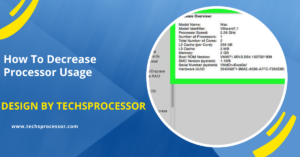What Type Is Instel Processor Arm Or Amd – A Detailed Overview!
Intel processors are based on the x86 architecture, similar to AMD processors, and are not ARM processors. Intel and AMD focus on CISC architecture, while ARM is based on RISC, optimized for mobile devices.
In this article, we’ll clarify the distinctions between these processor types and help you understand where Intel stands in the landscape of modern computing.
Understanding Processor Architectures: ARM, AMD, and Intel

Before diving into the specifics of Intel processors, it’s essential to understand the basics of processor architectures:
- ARM Architecture: ARM processors are based on a RISC (Reduced Instruction Set Computing) architecture, which is designed to be highly efficient in terms of power consumption. ARM processors are commonly found in mobile devices, such as smartphones and tablets, because they are optimized for low power usage while still providing solid performance.
- AMD Processors: AMD, or Advanced Micro Devices, produces x86 processors similar to Intel. These processors are based on the CISC (Complex Instruction Set Computing) architecture, which is powerful and versatile, making them suitable for a wide range of computing tasks, from gaming to professional workloads.
What Type Are Intel Processors?
Intel processors are not ARM processors or AMD processors. Instead, Intel manufactures its own line of x86 processors, which are also based on the CISC architecture. Here’s a breakdown of what makes Intel processors unique:
- Intel’s x86 Architecture: Intel’s processors are built on the x86 architecture, which is the same architecture used by AMD. This architecture is known for its ability to handle complex computing tasks, making Intel processors ideal for a variety of applications, from consumer PCs to data centers.
- Intel vs. AMD: Both Intel and AMD produce processors based on the x86 architecture, but they are different companies with distinct product lines. Intel processors are known for their strong single-core performance and energy efficiency, while AMD has gained popularity for offering more cores at competitive prices.
- Intel and ARM: While Intel has explored ARM architecture in the past, particularly with some of its low-power chips, the majority of Intel’s processors are based on its x86 architecture. ARM processors are more common in mobile and embedded devices, areas where Intel does not focus as heavily.
Popular Intel Processor Families:
Intel has a wide range of processor families, each designed for specific types of computing needs:
- Intel Core Series: This is perhaps the most well-known line of processors, with variants like Core i3, i5, i7, and i9. These processors are widely used in laptops and desktops, offering a balance of performance and power efficiency.
- Intel Xeon: Xeon processors are designed for servers and workstations. They offer higher core counts and support for advanced features like ECC memory, making them ideal for professional and enterprise-level computing tasks.
- Intel Atom: The Atom line of processors is Intel’s answer to low-power computing needs. While not as powerful as the Core or Xeon series, Atom processors are used in embedded systems, IoT devices, and some mobile applications.
Also Read: Ebay Is Dropping American Express As A Payment Processor. – What You Need to Know!
Why the Confusion?
The confusion between Intel, ARM, and AMD processors often arises from the overlapping use cases and the competitive nature of the tech industry. For instance:
- ARM vs. x86: ARM processors are increasingly being used in laptops and desktops, areas traditionally dominated by x86 processors from Intel and AMD. This shift has led to more comparisons and confusion among consumers about which type of processor is best suited for their needs.
- Intel vs. AMD Rivalry: The ongoing rivalry between Intel and AMD has led to frequent comparisons, with consumers often wondering if they are choosing between processor architectures rather than specific brands.
FAQ’s
1. What type of architecture do Intel processors use?
Intel processors use the x86 architecture.
2. Are Intel processors the same as ARM processors?
No, Intel processors are not ARM processors; they use different architectures.
3. What is the primary difference between ARM and Intel processors?
ARM processors use RISC architecture, focusing on power efficiency, while Intel processors use CISC architecture, designed for more complex computing tasks.
4. Can Intel processors be compared to AMD processors?
Yes, both Intel and AMD processors use the x86 architecture, making them directly comparable.
5. Why is there confusion between Intel, ARM, and AMD processors?
The confusion arises from overlapping use cases and the competitive nature of the tech industry, leading consumers to compare different processor types and brands.
6. What are Intel Core processors?
Intel Core processors are a popular line of CPUs, including i3, i5, i7, and i9 models, known for balancing performance and power efficiency.
7. What is the difference between Intel and AMD processors?
Intel processors are known for strong single-core performance and energy efficiency, while AMD processors often offer more cores at competitive prices.
8. Does Intel make ARM processors?
Intel has explored ARM architecture in the past, but the majority of their processors are based on the x86 architecture.
9. Which Intel processor is suitable for servers?
Intel Xeon processors are designed for servers and workstations, offering higher core counts and advanced features like ECC memory.
10. What is Intel Atom?
Intel Atom processors are low-power CPUs used in embedded systems, IoT devices, and some mobile applications.
Conclusion
In summary, Intel processors are based on the x86 architecture, similar to AMD processors, and are not ARM processors. Each processor type has its strengths, and the best choice depends on your specific computing needs. Whether you’re looking for high-performance gaming, professional workstations, or efficient mobile computing, understanding the differences between ARM, AMD, and Intel will help you make an informed decision.





Post Comment